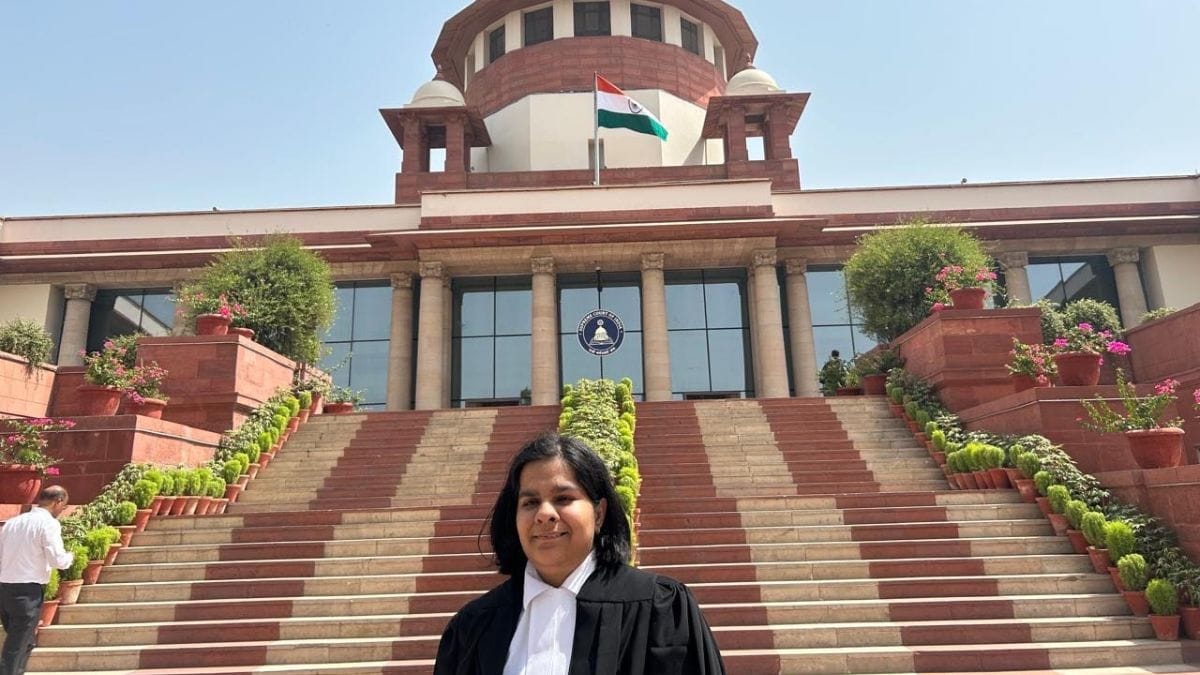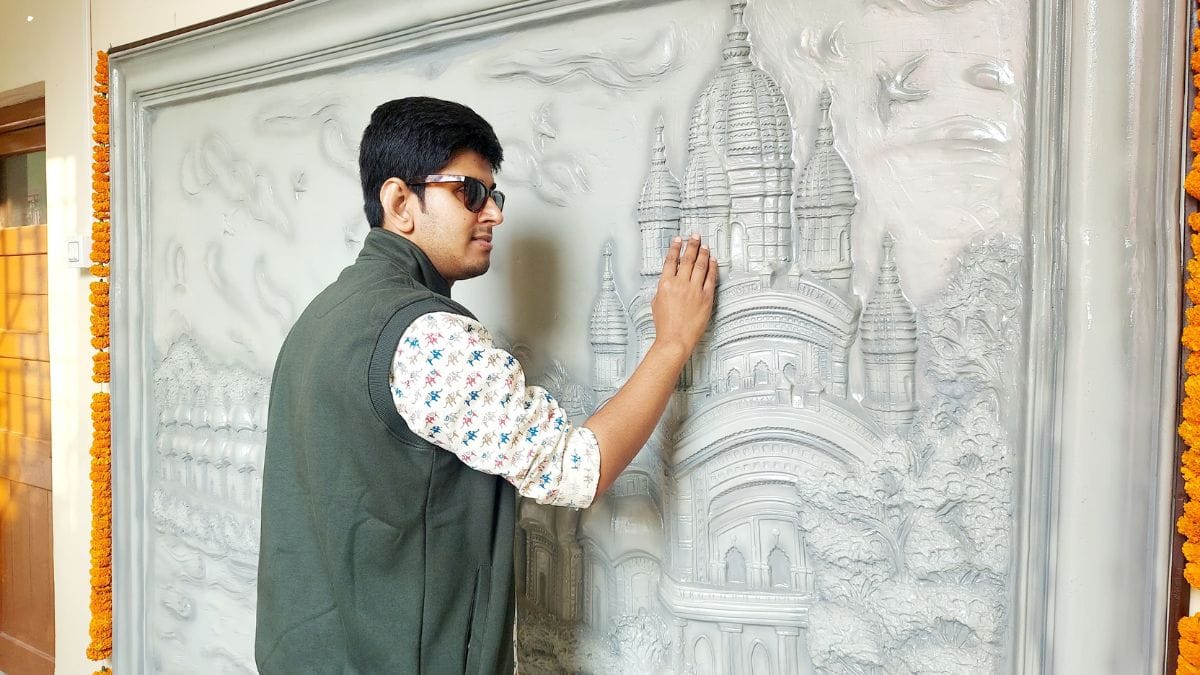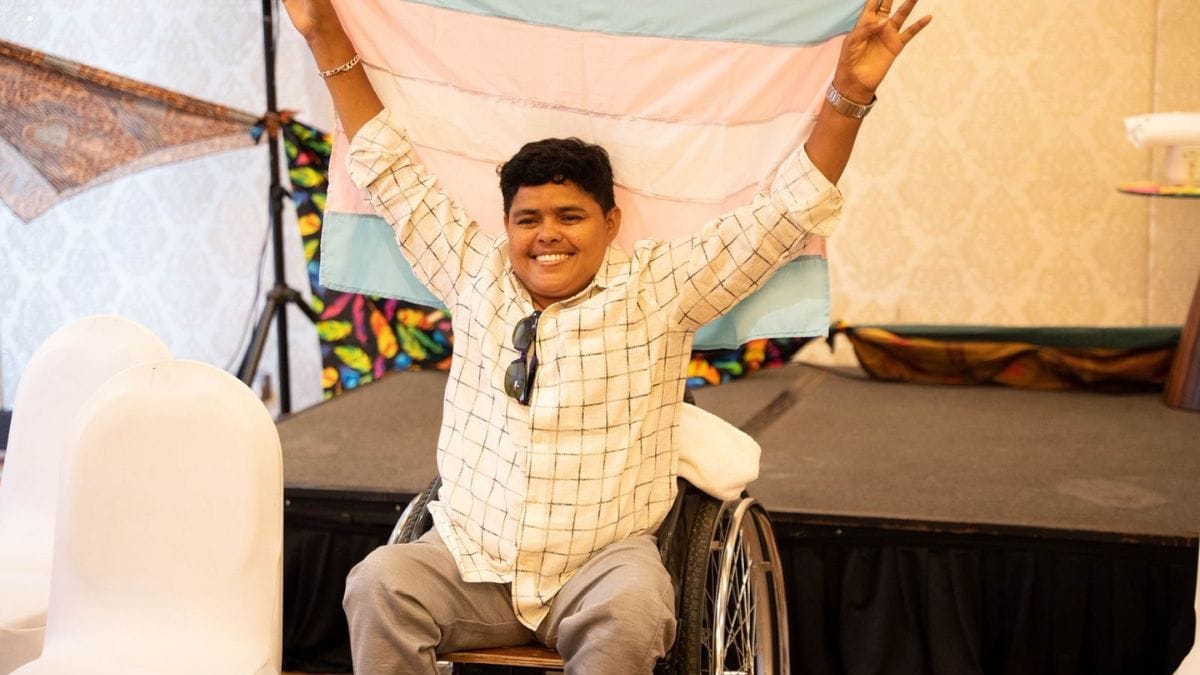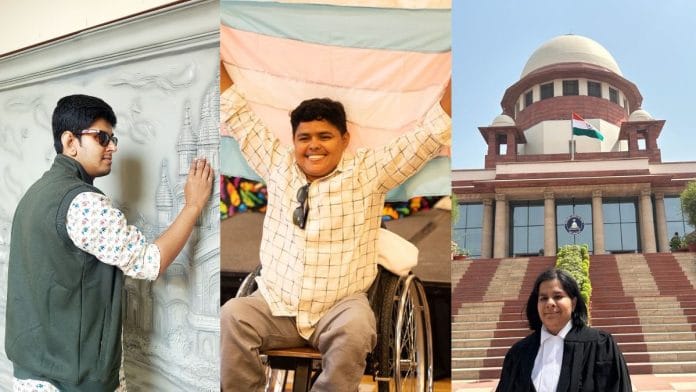New Delhi: Being disabled in India is a challenge in itself. For those who are also queer, the barriers often double: not only are they stigmatised and face many other unique obstacles, such as feeling excluded from dating apps, they also don’t have any laws catering to their intersecting identities.
The Rights of Persons with Disabilities Act, 2016, protects the rights of those with 21 recognised disabilities and the Transgender Persons (Protection of Rights) Act, 2019, aims to secure the inclusion of transgender persons in society through welfare schemes. But no law caters to all spectrums of the LGBTQ community, specifically queer individuals with disabilities.
“Both communities don’t recognise your struggle. Queer people often do not understand that there are disabled people as well, and sometimes disabled people do not understand queer people’s struggles as well,” visually-impaired lawyer Anchal Bhatheja, who identifies as a cisgender homosexual woman, told ThePrint.
“There is a lot of stigma attached to both these categories; so more often than not, people are very hush-hush about it,” added Bhatheja, who founded QAble, an initiative focused on legal and policy interventions for queer persons with disabilities.
“PwDs (Persons With Disabilities) are routinely viewed as asexual beings, or superhumans who have next to no sexual needs,” she said.

Queer people with disabilities say they face unique disadvantages. Apart from being seen as asexual, they also find themselves locked out of community spaces such as gay bars, which are often inaccessible for wheelchair users, or pride parades again because of accessibility issues.
Moreover, even modern dating comes with hurdles. Dating sites are built around curated pictures, putting people with physical disabilities at a disadvantage and are virtually unusable for those who are visually impaired. They say another big problem they face is that they are often the target of violence, but have no specific law to protect them.
“Oftentimes, community spaces like gay bars, or even pride parades, are not accessible for persons with disabilities,” Bhatheja told ThePrint.
Pointing to the “visual” nature of queer identities, Bhatheja said that concepts such as “gaydar”, or the intuitive ability to identify someone as gay, rely on how LGBTQ people look, dress or express themselves.
Bhatheja said that dating apps are inaccessible for queer people with disabilities. “Tinder and Bumble are very picture-oriented apps and their user interface is very inaccessible. Hinge is marginally better as it allows for audio messages.”
She also highlighted the “emotional burden” and isolation that come with navigating these challenges. “As a PwD, your capacities are limited. One time, I had a match with someone who said she couldn’t go out on a date without her parents’ permission.”
Ishan Chakroborty, a 34-year-old blind professor who came out only a few months ago, shared similar frustrations. “Every dating app is primarily about pictures. You won’t get a right swipe unless you put a picture.”

Also Read: India’s queer politics isn’t about Right vs Left. It’s a matter of privilege
Frequent targets of violence
Kiran Nayak, a 39-year-old Adivasi trans man with polio, highlighted how people living at the intersection of queer and disability identities are highly vulnerable to violence.
Nayak recalls a 14-year-old disabled queer minor who was raped and later impregnated by a man in 2014. “When we found her, she was six months pregnant, with multiple disabilities. Now, she is 21 years old and is coming to terms with her identity, saying that she feels differently about the female gender now, and that her body is changing,” Nayak told ThePrint.

“We didn’t get much support to fight her case, even under the 2016 Act. So we wrote to politicians, the press and the Child Welfare Committees (CWCs), to get her the assistance she needs. They helped rehabilitate the newborn, and the local leaders helped us deal with the threats from the rape accused when he threatened us for filing an FIR against him,” Nayak added.
Having worked in the field of transgender and disability rights in southern states like Karnataka, Kerala, Telangana and Andhra Pradesh, Nayak said he’s seen the exclusion of queer people with disabilities from close quarters.
“Being a trans man, in a wheelchair, I am well aware of the violence, exclusion, stigmatisation, and invisibilisation, meted out to persons who are placed at the intersection of this queer and PwD identity,” said Nayak.
During his work with trans and disabled people, Nayak encountered several cases of trans people having problems with their partners, leaving their families, and in some extreme cases, even taking their own lives.
“Oftentimes, they (queer persons with disabilities) also have issues with their partners, but most of them cannot speak up about it, or even come out with it,” he said while underlining the need for a proper platform for queer persons with disabilities to voice their concerns.
Nayak confessed that when he was still growing up, he was unaware of the gender issues, his trans identity, and the discourse around it, but still had feelings for women. “Thoughts like whether I was a female or male person, lesbian or gay person, they repeatedly kept popping up in my head,” he said.
‘No platform to voice our concerns’
Queer people with disabilities say that one of their biggest challenges is that they have no platform to voice their concerns.
Nayak said neither the Rights of Persons with Disabilities Act, 2016, nor the Transgender Persons Act addresses the intersection of transgender identity and disability.
“Both these legislations are silent on the intersection of trans people with disabilities. There is a real problem when it comes to intersectionality,” he said.
He said the government can show the way forward by coming up with directives for emergency support, legal training and greater awareness of the rights of queer persons with disabilities.
Kiran’s organisation, Society for Transmen Action and Rights (STAR), offers support to queer individuals with disabilities and trans persons, among others, and also routinely works with paralegal volunteers and ASHA workers to help these people.
Facing social exclusion and discrimination
Many queer people with disabilities say they feel excluded on account of their physical challenges and their identities.
Chakraborty, a blind queer person and assistant professor at Jadavpur University’s Department of English, told ThePrint that he struggles communicating his concerns about his sexuality and sexual desires.
People usually only perceive him as queer, without understanding how his visual disability works as a barrier in establishing queer contacts.
“Similarly, many times people perceive me as only disabled and they do not understand or try to understand that my preferences might be different from the straight, hetero-patriarchal dominated norms,” Chakroborty said.
He said he never faced any pressure from anyone in his family, because of his blindness, or otherwise, until he started being open about his identity.
“After I came out, people suddenly became interested in talking about my marriage and knowing whether I’m with a girl or not,” Chakroborty said.
“The other day, my childhood friend and I clicked a picture and I posted it. The attitude of people was one of amazement, many going to the extent of saying, ‘You have been able to bag an able-bodied woman’. I was flooded with congratulations,” he added.
Chakroborty said he was either completely cancelled out as an eligible bachelor due to his blindness, or people would take “excessive interest” in his love life because of his identity.
Recalling his adolescent days, he remembers the cruel taunts, “I was called chakka, hijra because I couldn’t walk very fast, had low vision, never went out to play. The truth is I never felt safe with the boys, nor was I wanted by them. In fact, they bullied me.”
The bullying wasn’t limited to men. He said women also joined them, highlighting that patriarchy works through women as well, though perhaps more subtly.
Within the disabled community, he felt excluded and humiliated because of his queerness. “Many disabled friends have tried to include me, shown empathy, but I have faced verbal violence there too,” he said.
A unique kind of exclusion also affects Ishan because queerness is heavily focused on visual markers, such as clothes, pride walks and jewellery.
“Dressing up is a huge part of politics in the queer sphere. Appreciating others’ dresses, dressing in a particular way, are all important to the queer community, but since I am not participating due to my disability, I feel left out,” he said.
The landmark 2018 ruling may have decriminalised homosexuality in India, but for queer people with disabilities, the struggle is far from over. Much like the young woman navigating both disability and her sexuality in the movie Margarita with a Straw, queer people with disabilities in India live at the margins twice over.
(Edited by Sugita Katyal)
Also Read: ‘Postcards from Colaba’ is a heritage walk with a twist. An homage to Mumbai’s queer scene






